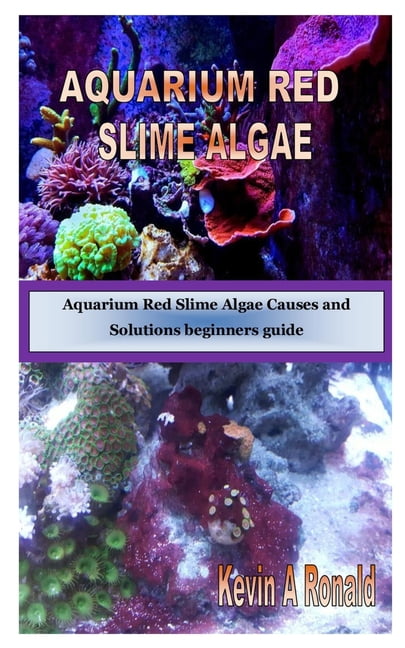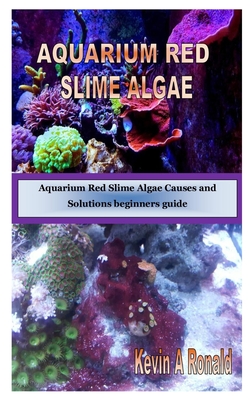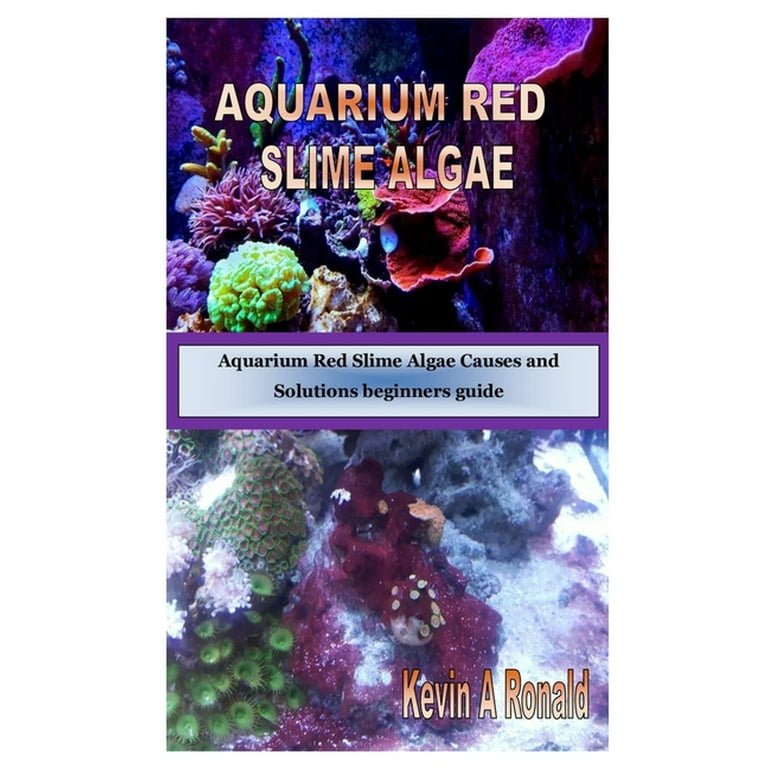Aquarium red slime algae is caused by high nitrate levels and nutrient imbalance in the tank. To prevent and remove red slime algae, water changes, removing detritus, and improving water flow are effective solutions.
Additionally, adding snails like Trochus and Cerith can help control the growth of red slime algae.
:strip_icc()/153345014-56a81f103df78cf7729c583c.jpg)
Credit: www.thesprucepets.com
Understanding Aquarium Red Slime Algae
Aquarium red slime algae, also known as cyanobacteria, is a common problem that many aquarium owners face. It is a type of bacteria that can quickly spread and cover various surfaces in the tank, including the substrate, rocks, and even live plants. Understanding the causes and effects of red slime algae is essential for effectively preventing and treating this nuisance.
What Is Aquarium Red Slime Algae?
Aquarium red slime algae, or cyanobacteria, is a harmful bacterium that can thrive in freshwater and saltwater aquariums. It appears as a slimy, red or reddish-brown film that often spreads rapidly on tank surfaces. It is not an actual algae but rather a type of bacteria that can photosynthesize, using light as a source of energy to grow and multiply.
Causes Of Aquarium Red Slime Algae
There are several factors that can contribute to the growth of red slime algae in an aquarium:
- Poor water flow: Red algae tends to grow in areas with stagnant or slow-moving water. Providing adequate water flow in all areas of the tank can help prevent its growth.
- Nutrient imbalance: Excess nutrients, particularly nitrates and phosphates, in the water can fuel the growth of red slime algae. This can be caused by overfeeding, decaying organic matter, or inefficient filtration.
- Low oxygen levels: Insufficient oxygen levels in the aquarium can create favorable conditions for red slime algae to thrive.
- High light levels: Red slime algae can benefit from intense or prolonged light exposure. Direct sunlight or leaving aquarium lights on for extended periods can contribute to its growth.
- Imbalanced bacteria populations: A lack of beneficial bacteria, particularly those that compete with cyanobacteria, can increase the likelihood of red slime algae blooms.
Effects Of Aquarium Red Slime Algae
The presence of red slime algae in an aquarium can have several negative effects:
- Aesthetic issues: The slimy appearance of red slime algae can be unsightly and detract from the overall visual appeal of the tank.
- Altered water chemistry: Red slime algae can release toxins into the water, impacting the chemistry and overall health of the aquarium.
- Difficulty for other organisms: The growth of red slime algae can hinder the growth and overall health of other aquarium inhabitants, such as plants and corals, by competing for resources and suffocating them.
- Reduced oxygen levels: An excessive growth of red slime algae can deplete oxygen levels in the water, creating an inhospitable environment for fish and other aquatic organisms.
In order to effectively combat aquarium red slime algae and prevent its reoccurrence, it is crucial to address the underlying causes and implement appropriate solutions. Understanding the nature of this algae and its effects will greatly help in creating a healthy and visually appealing aquarium environment.

Credit: www.walmart.com
Preventing Aquarium Red Slime Algae
To prevent aquarium red slime algae, you can start by improving water flow in areas where the algae is growing. Additionally, regular water changes and proper maintenance can help eliminate reoccurrence. Adding Trochus and Cerith snails to your tank can also help eat the algae.
Maintaining Proper Nutrient Levels
To prevent red slime algae in your aquarium, it is essential to maintain proper nutrient levels. Red slime algae thrives in environments with high levels of nutrients, specifically phosphates and nitrates. These nutrients can accumulate in the water due to overfeeding, decaying organic matter, or inadequate filtration. To maintain low nutrient levels, follow these steps:- Feed your fish sparingly and avoid overfeeding. A good rule of thumb is to only feed what your fish can consume within 2-3 minutes.
- Regularly remove uneaten food, debris, and decaying matter from the tank. This can be achieved through regular water changes and thorough gravel cleaning.
- Ensure that your aquarium has efficient filtration systems in place, including mechanical, chemical, and biological filtration. These systems help to remove excess nutrients and maintain a healthy water ecosystem.
Promoting Water Flow
Another effective way to prevent red slime algae is by promoting water flow in your aquarium. Red algae thrives in areas with stagnant water and poor circulation. To improve water flow, consider the following:- Position powerheads and pumps strategically to create gentle currents throughout the tank. This will help inhibit the growth of red slime algae in stagnant areas.
- Place any decorative rocks or structures in a way that allows water to circulate freely around and behind them. This will prevent stagnant water pockets where algae can thrive.
- Regularly clean and maintain your powerheads and pumps to ensure optimal performance and consistent water flow.
Using Beneficial Bacteria
Using beneficial bacteria can also play an important role in preventing red slime algae. These bacteria compete for available nutrients, depriving red algae of their food source. Here’s how you can incorporate beneficial bacteria into your aquarium maintenance routine:- Use a high-quality bacterial supplement specifically designed for aquarium use. These supplements contain strains of bacteria that help break down organic waste and maintain a healthy balance of nutrients.
- Consider using live rock or live sand in your aquarium setup. These natural sources of beneficial bacteria can help establish a stable biological filter, reducing the likelihood of red algae outbreaks.
- Regularly monitor and maintain proper water parameters, such as pH and temperature, as these can impact the effectiveness of beneficial bacteria.
Treating Aquarium Red Slime Algae
Red slime algae, also known as cyanobacteria, can be a nuisance in aquariums. It can quickly cover surfaces, suffocating corals and other aquatic life. It is important to address this issue promptly to prevent further spread. In this article, we will explore several methods for treating aquarium red slime algae.
Mechanical Removal
Mechanical removal is one of the first steps to take when dealing with red slime algae. This involves physically removing the algae from the affected surfaces. Here are some methods for mechanical removal:
- Using an algae scraper or brush to manually scrape off the algae from the glass or rocks.
- Vacuuming the substrate to remove any accumulated detritus, which can contribute to the growth of red slime algae.
Chemical Treatments
If mechanical removal alone is not effective, chemical treatments can be used to control red slime algae. Here are some commonly used chemical treatments:
- Using hydrogen peroxide: Dilute hydrogen peroxide can be used to spot treat the affected areas. Apply it directly to the algae, let it sit for a few minutes, and then rinse it off with water.
- Utilizing erythromycin: This antibiotic can be effective in treating red slime algae. Follow the instructions on the product label for dosage and application.
Biological Methods
Biological methods involve introducing or enhancing natural processes and organisms to combat red slime algae. Here are some biological methods to consider:
- Increasing water flow: Red slime algae grows poorly in fast-flowing water. Increasing water flow in affected areas of the tank can help prevent and eliminate growth.
- Introducing algae-eating organisms: Certain fish, snails, or hermit crabs can be beneficial in controlling red slime algae. Research suitable species for your aquarium and introduce them as natural cleaners.
Remember, it’s important to address the root cause of red slime algae growth to prevent future outbreaks. Regular maintenance and monitoring of water parameters such as nitrates and phosphates can help maintain a healthy aquarium environment and prevent the growth of red slime algae.
By employing a combination of mechanical removal, chemical treatments, and biological methods, you can effectively treat red slime algae in your aquarium and create a healthier environment for your aquatic life.

Credit: www.tatteredcover.com
Frequently Asked Questions On Aquarium Red Slime Algae Causes And Solutions
How Do You Fix Red Slime Algae?
To fix red slime algae, try water changes and removing detritus to lower nitrates. If that doesn’t work, consider replacing the substrate, especially if it is old and deep. Increasing water flow in the affected areas can also help prevent and eliminate red algae growth.
Trochus and Cerith snails are good options to eat red slime algae. Regular maintenance and ongoing water changes can delay and prevent its reoccurrence.
How Do I Get Rid Of Red Algae In My Aquarium?
To get rid of red algae in your aquarium, increase water flow in affected areas, perform regular water changes, and properly maintain the tank. Scrub the glass, gravel, and plants to remove initial algae growth. Consider adding Trochus and Cerith snails to eat the algae.
Correcting underlying causes such as excess nutrients will help prevent reoccurrence.
How Do I Get Rid Of Slime Algae In My Fish Tank?
To get rid of slime algae in your fish tank: 1. Scrape the glass, scrub the gravel and plants, and vacuum the substrate to remove the algae initially. 2. Conduct regular water changes and maintenance to delay and reduce reoccurrence. 3.
Increase water flow in areas where the algae is growing to prevent growth. 4. Consider adding Trochus and Cerith snails to eat the algae. 5. Address underlying causes like high nitrate levels or old substrate that may fuel algae growth.
What Eats Red Slime Algae?
Trochus and Cerith snails are the best inverts to eat red slime algae. They will clean a light bloom and keep your tank looking clean.
Conclusion
To effectively combat and prevent red slime algae in your aquarium, it’s important to follow a few key steps. First, focus on maintaining good water flow throughout your tank, as fast-flowing water inhibits algae growth. Secondly, regularly perform water changes and proper maintenance to keep nutrient levels in check.
Additionally, consider introducing Trochus and Cerith snails to naturally consume the algae. By implementing these preventative measures, you can maintain a clean and healthy aquarium environment.

